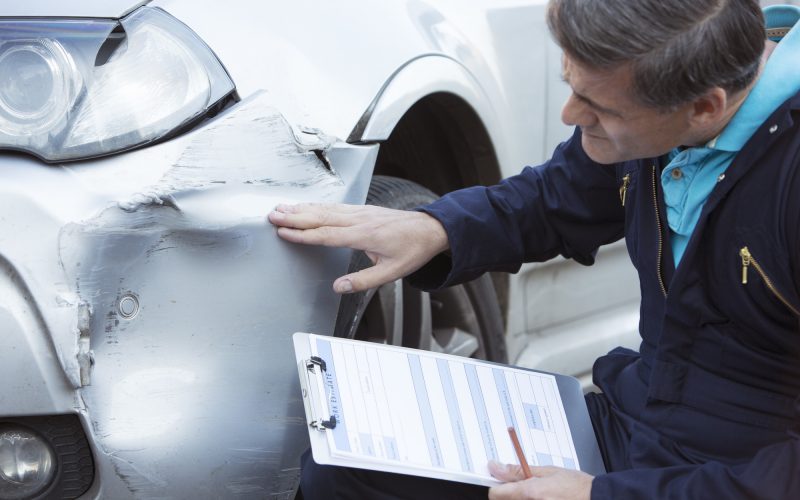How Do You Determine If Your Car Is Totaled?
When we total a car, we may envision a head-on crash at high speeds. Though you may consider this the worst thing that can happen, it has become more common.
The rising of total loss claims began in 2010 with no sign of slowing. There’s more than one reason for it.
The frequency of accidents has gone up, as well as the cost to repair a car. As if this isn’t enough, some states allow insurers to total a vehicle if damages are equal to 70% of its value.
The value is at the time of the accident, not the price for which you bought it. Many find it shocking to learn their car is a total loss because many times it is still driveable. So how do you determine if a car is totaled?
Here’s what you need to know.
How Old is Your Car?
Though new car sales continue to rise in the US, most are older. It’s not unusual to drive a car for ten years or more. And, though we may believe an older car is cheaper to fix, it’s not.
Even a minor accident can rumple a bumper past minor work. Replacing an entire quarter panel costs the same whether it’s a new car or an old one. So, let’s say your 10-year old Toyota is worth $5,000.
You need a new bumper, headlight assembly, and paint. With labor, the costs can exceed $4,000. This is 80% of the value of the car. In many states, this is enough to deem it a total loss.
How Much is Your Car Worth?
We may think that valuing a car is as simple as looking up the blue book value. But, insurers research your area.
They’ll find like cars with similar features and mileage. The worth of your vehicle is what you could have sold it for on the day of your accident. A new car depreciates fast.
New cars which retail for $35,000 will be worth $21,000 after one year. There may be other depreciating factors like prior damage, too. The good news is that any upgrades you’ve done will be part of the valuation.
How do You Determine if a Car is Totaled? The Cost to Repair
Many in the industry point to the cost of repairs as one of the main reasons more cars are a total loss today. Car makers add options like sensors in windshields, bumpers, and headlight casings.
These tell us if we’re about to back into something or turns our headlights on when it’s dark. The electronics make all these parts more expensive than the primary feature.
The NICB values the most common car parts for its work on “chop shop” operations. The cost to replace a headlamp for a 2016 Altima is $1,000. Apiece.
And, this does not include labor. The most common replacement items for the Altima add up to over $14,000.
If the car’s value is $20,000 or less, it can be a total loss depending on the state. (70% of the car’s value to repair)
You VS the Insurance Company
Some may not want to give up their car if it’s a total loss. Insurers will then pay the salvage amount to you, and you can keep the car.
It will have a salvage title going forward, so its value will be lower. If you’re more interested in getting what you can and move on, you do have some bargaining power.
Experts say never take the first offer. And, do your research. Look at similar cars in your area at dealerships rather than private sellers. Note all the differences in mileage and features.
List all the personal items in the car with damage. Provide records of any repairs on the car from the last few months. These additions can help you get ample amount you’ll need for a new car.
Checking sites like truck accident lawyers to help you understand your legal rights.
What if You Still Owe Money on Your Totaled Car?
If you still have payments on your car, and most do, it’s the lender who’ll get their money first. If there is anything left over, the proceeds will be yours.
Are there some cases when the claim is not enough to pay the loan? Yes. Today, many car buyers take the 6-year loan option.
And, depreciation chips away at the car’s value every year. Insurance covers the vehicle, not its finances. Where there is a shortage, some are paying for a car they no longer have.
The difference is why many lenders ask for gap insurance before financing.
This policy includes the amount of the loan no matter the value of the car. It is well worth its low cost.
Does it Matter Who is at Fault?
Determining fault for an accident is through police reports and driver’s statements. Most accidents will not need a personal investigation by the insurance company.
They’ll rely on pictures and estimates to assign a dollar amount. And, the fault is not always 100%.
If there are more than two vehicles, for example, one or more may be at 50% fault. In this case, the proceeds for a claim is payable at 50% of the value.
Drivers who receive a citation from law enforcement may have part of the fault in an accident. Some states have “no-fault” policies.
This means each driver files a claim with their insurer. No matter the ultimate assigning of responsibility.
Do you have more questions like how do you determine if a your car is totaled?
Taking good care of your car is essential to maintain is worth. Take a look at a library of manuals and check our blog for more information you can use.


